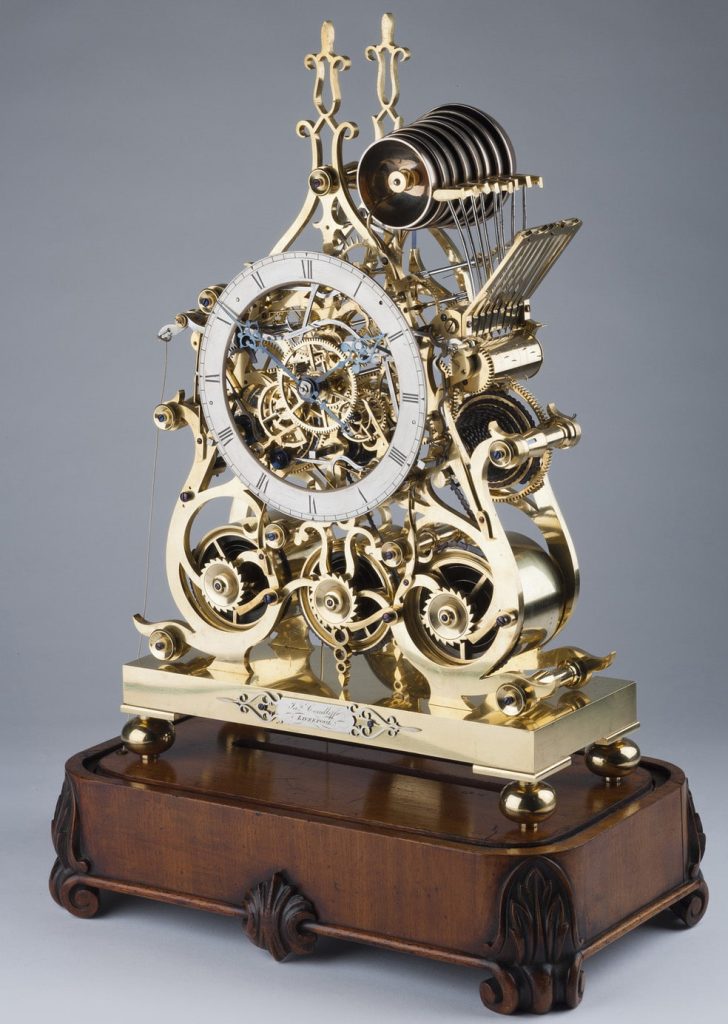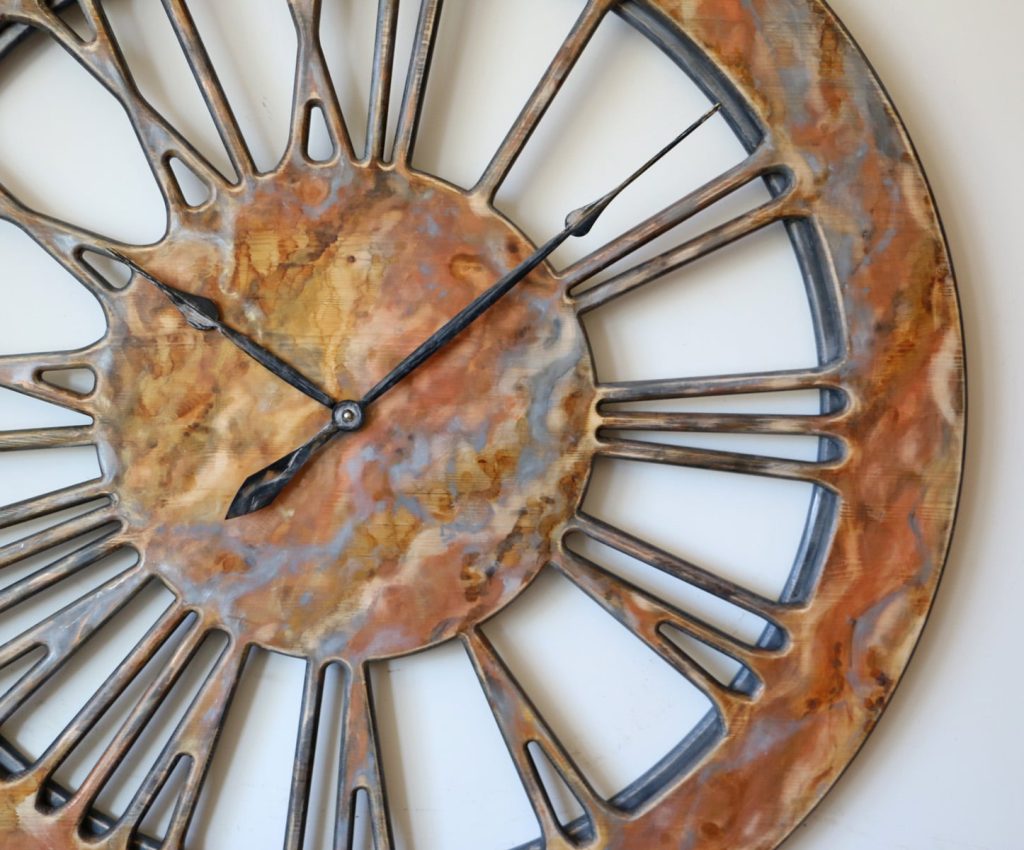What do we have in mind when we search for skeleton clocks?
When we mention skeleton clocks in a conversation most of us think about the minimalist, thin, metal structure. Quick google search confirms the picture ingrained in our head. We can see those clocks in many public places including cafes, restaurants or even hospitals. This type of product is extremely popular among online retailers. However, historically the term has a much broader meaning.
In essence, the skeleton clocks are characterized by their open form or visible moving parts. Most common features include minimalist design, transparent background and inner gear exposure.
Diversity and historical origins of skeleton clocks
According to Wikipedia, the term ‘skeleton clock’ dates back to the 18th century. In those times, people used it to name designs where metal clockwork mechanism was visibly displayed in the clock’s body. In his book, Derek Roberts, describes how some of the finest makers of those times used skeletal form to fully present their skills and attract wealthy clients. Even nowadays, majority of us would be impressed by the true art and skill presented in those timepieces. Some of the most outstanding skeleton clocks, in their original meaning, are available at auctions. This is where antique hunters may spend tens of thousands of pounds on a single unique timepiece.

Fascination with mechanical clock movements continues today in so called skeletal gear clocks. Present designs often incorporate sophisticated configurations of moving part. We can find wall clocks, mantel clocks and even wristwatches in this niche. The array of available products is enormous and includes both commercially produced and handmade pieces.
Wall clocks with skeletal design in home decor
The meaning of “skeleton clocks” in everyday English changed over the years. Not many of us realize what are the origins of this common term. Our present understanding of this phrase applies mainly to wall clocks with metal face structure. Like we explained at the beginning, this perception is shaped by the images promoted on the internet as well as real life experience. Modern skeletal wall clocks have no visible back-plate and you can see the wall background between the numbers and framework. This minimalist design with metal elements complements very trendy industrial home decor. They are inexpensive, readily available and produced on a large scale. As a result, metal skeleton clocks for wall are so popular online.
Looking beyond the mainstream retailers you can also find wooden wall clocks in a skeleton form. These timepieces can be visually more attractive then their metal counterparts. It is mainly due to the nature of the material, outstanding craftsmanship required to make them and often high artistic value.

Consequently, they can be a lot more pricey so typically attract a smaller group of connoisseurs. It is fair to say that skeleton wall clocks made of wood suit a wider range of interiors including shabby chic, traditional or even contemporary ones. They offer more flexibility in colour and style.

